Villazon – Tupiza – Potosi
This was my first week in Bolivia. On Monday, 25 February, I left from Villazon early – at 8:00am – and at the exit of the town I encountered a strike of coach drivers, blocking the road with their coaches. I could get past it, but cars couldn't, and so I continued on my way to Tupiza.
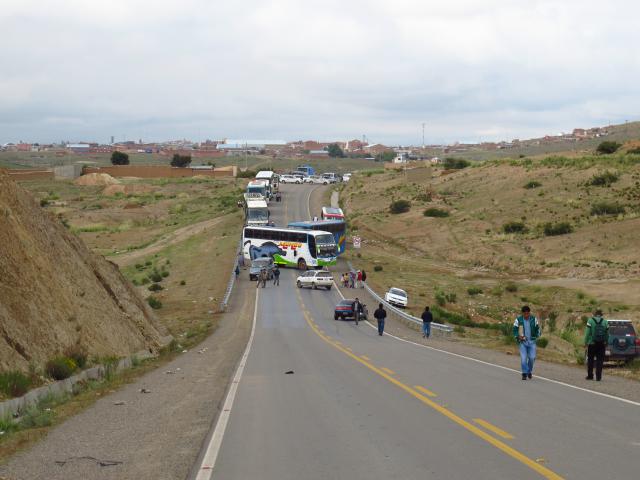
After a while, another cyclists came from behind on hos bike. We introduced each other. He was Rob from Germany, cycling from Montevideo to Lima (his blog is at http://enbici.de – in German with summaries in Spanish). We continued together until Tupiza. Initially we were at almost 3500m altitude, sometimes going up or down a little.
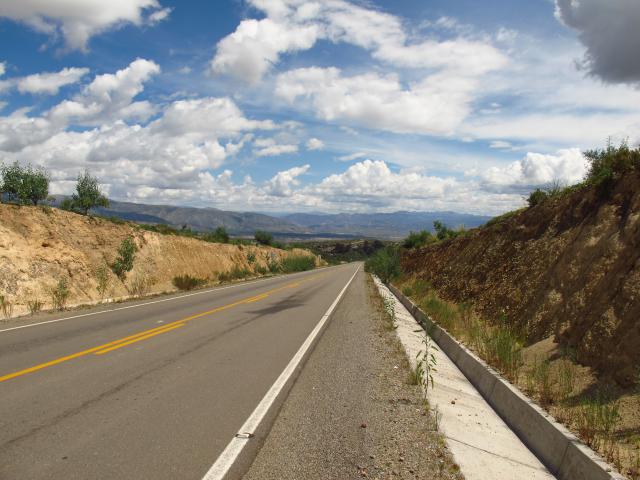
Finally, the descend into the valley of the Rio Tupiza began – a descend of 500m on only 10km. It was impressive and really fast. Unfortunately, after the descend, the road continued for another 20km all the time going up and down near the river, which tired us a lot. We continued slowly, sometimes very slowly. But the views of the mountains from the valley were very impressive.
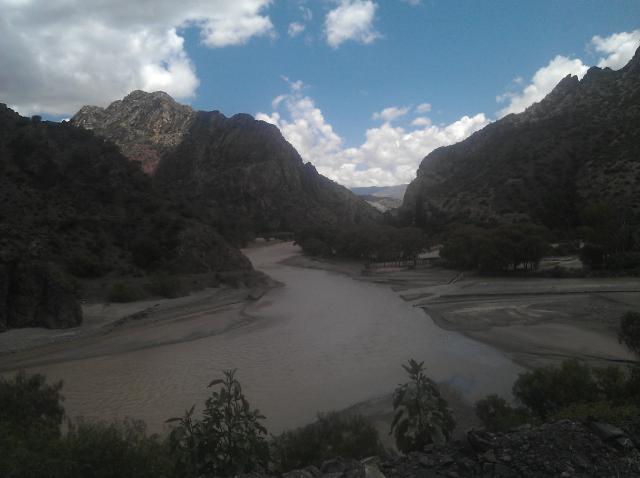
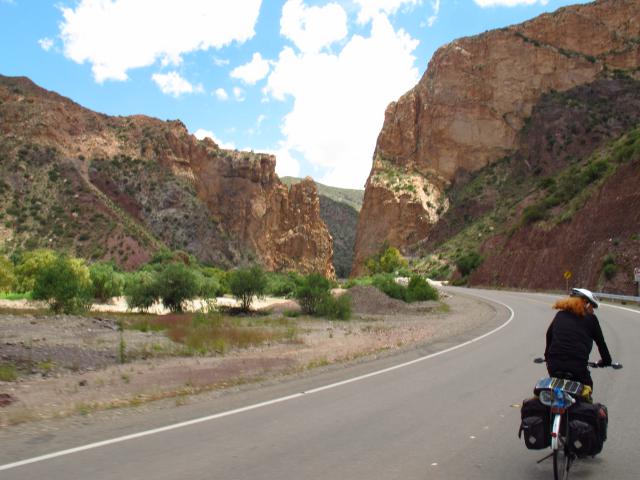
We arrived at Tupiza at more or less 2pm, and at first we went to a restaurant for lunch, and to drink a beer. In Bolivia there is normally a set lunch, which normally is not vegetarian, but the changed the main dish for me, so that I could have something vegetarian. Later we went to a hostel (Hostal El Torre), where we checked in for the night.
Tupiza is quite a tourist town, which serves as a departure point for jeep trips to the salt lakes of Uyuni and the lagunas near the border to Chile – at an altitude of almost 5000m. They offered us such a tour too, but we didn't do it.
In Tupiza the separation of the infrastructure for tourists – hotels, restaurants, etc – and the one for the local population is very visible. When we arrived we had lunch in a restaurant which in the majority was for locals, and only very little for tourists. But at night we had dinner in a restaurant almost exclusively for tourists... and there are a lot of them, in the majority pizzerias.
We decided to have a rest day in Tupiza, and initially Rob's idea was to continue to Uyuni, and mine to go to Potosi. On the next day Rob had diarrhoea, and didn't do much, and I went for a walk in the afternoon. We decided to continue together until Potosi, as the road to Uyuni is extremely hard – a dirt track – and it is easier to go to Potosi.
We rested for another day, and had a 10km walk until a small village called Bella Vista, where we ate bread and cheese for lunch. The idea was to walk to the Puerta del Diablo, but there were no signs, and so we walked past it without knowing it. Luckily, when we started to walk back, we hitch-hiked and a car stopped, and we got back to Tupiza by car. Luckily not only for the walking, but also because of the rain, as it began to rain an hour after we got back, and we wouldn't have been able to do the way in that time on foot.


Finally, on 28 February, we left Tupiza, and began the trip to Potosi – a four day trip. Shortly after Tupiza began the climb – 17km and a climb from 2950m up to 3650m. We did this in two hours, ascending slowly but continually, until we got to the highest point. For the next 25km the road went up and down a little, and at 42km from Tupiza we had a break. We had bread, cheese, eggs, and left-overs from dinner (quinoa) for lunch, and we rested for a while.
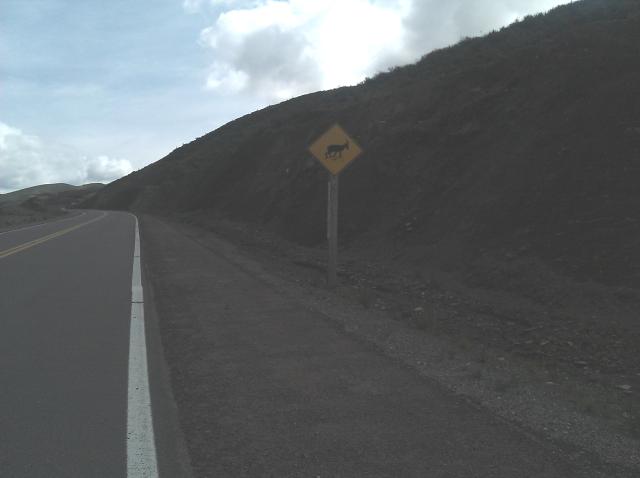
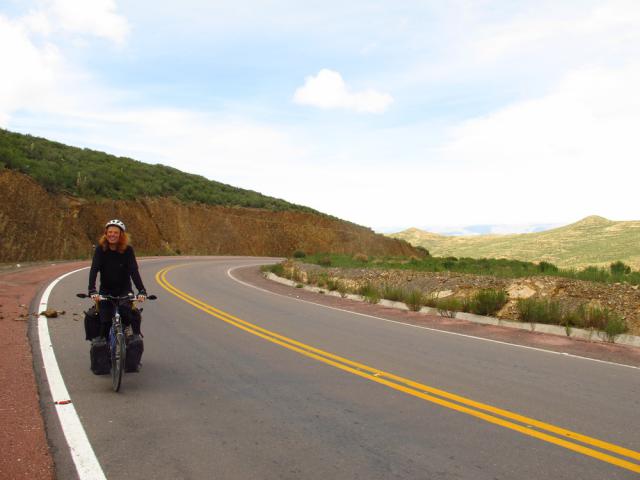

When we continued, we first had to climb a little, but shortly after began a descend of 30km and probably of 700 or 800m altitude. We did these 30km very fast, and then the last 11km to Santiago de Cotagaita. We arrived at Cotagaita at 2:30pm. We first had a lemonade, and then looked for accommodation. We found something for 20 bolivianos per person - £2.
Santiago de Cotagaita is a more or less large village, and clearly not touristic. Although the “gringo trail” passes through Cotagaita, normally the gringos don't leave their coaches on their way between Tupiza and Potosi, or Oruro, or Sucre, or La Paz. It is very visible that Cotagaita is a poorer village – the women who sell fruits and vegetables on the streets all sell very little – and all the same: peaches, grapes, sometimes bananas. Or tomatoes, onions, and potatoes, etc. We had a walk through the village in the afternoon, but didn't find much...
We went out again at night to have some dinner. We went to a restaurant of which we thought it was a little better, but they only had rice soup and chicken. We opted for the soup, which also had a piece of chicken in it. After eating the soup we left, and started to look for more food to eat in other places. But in whichever restaurant we asked they had the same – rice soup and chicken. In the end we ate some humita in the street – but it wasn't the best one. We went back to our accommodation for the rest of the evening and night.
On the second day we left at 8:30am for the 78km to Vitichi – but 78km with 1919m climb and 1568m descend. We started with the first climb – 700m. Then we continued climbing up and going down a little, sometimes more than a little, until we got to Tumusla, after another long descend. Tumusla is a small village, but there was a restaurant where an old woman served lunches. We ate a soup and drank something, and did a quite long break, as we had to climb again.

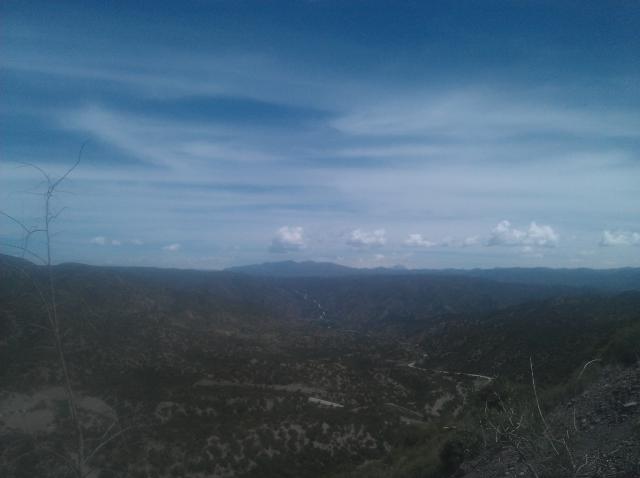
In the end we had to start again, and began to climb. The second half of the way was hard, and finally we arrived to Vitichi at about 5pm and quite exhausted. The village of Vitichi is on the side of the road, and we entered the village to look for accommodation. We found a nice hotel where we stayed for the night. We rested a little, and then we went for a walk through the village, also to have a beer and to look for a restaurant. The beer we had at the main square of the village, with children playing and clearly enjoying the presence of us gringos. The restaurant we found at the ruta 14, and we had a soup and a main dish for dinner – for me eggs, rice, and potatoes. We returned to the hotel to sleep.
On the third day we left at 8:15am, still quite tired from the day before. We only did 50km, but initially always going up and down, and then with quite some climb up to 3675m. At least we went along the river, going up more than down. On that day we got molested by dogs a lot, who chased us on our bicycles.

We arrived to Cuchu Ingenio at 1pm, and at first we went to a restaurant for lunch – again soup and for me eggs, rice, and potatoes. Then we went to look for accommodation. The only hotel in town didn't have any free room (at least that's what they said), and in the end we found accommodation at the service station – a quite dirty room with two beds, and no showers or anything. But we didn't have any other option.
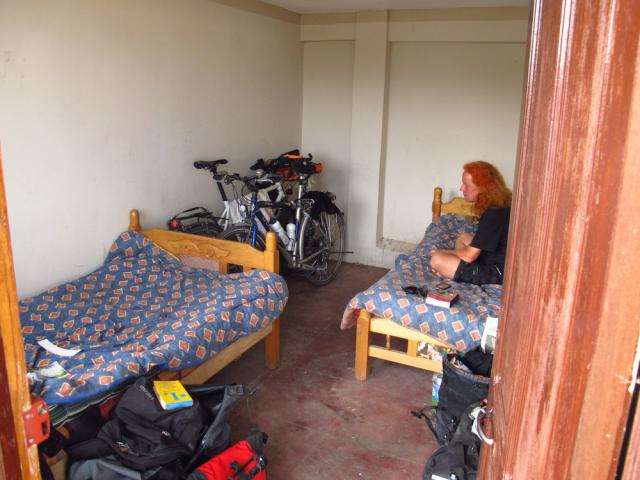
Today was the last day of the trip to Potosi – only 38.4km, but with a climb up to a hight of 4350m. We left early, and began the ascend. After more than two hours we arrived at the first summit of about 4220m. A quite hard climb. We went down again to 4100m, and cycled over a small altiplano between the two summits. From that moment on we had a quite strong wind from the front, and so the went quite slowly.
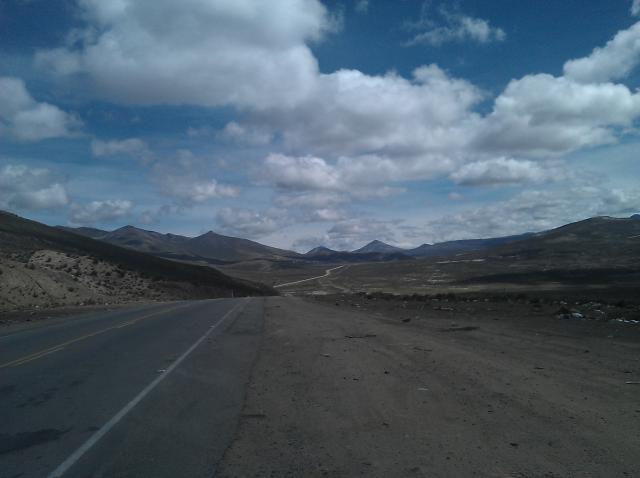
We had a break, and began the second climb up to 4350m. On the altiplano there were a lot of llamas, but also quite a bit of mining, and more mining as we came closer to Potosi. The last meters were hard, but shortly before the pass we had great impressive views – more towards out back.
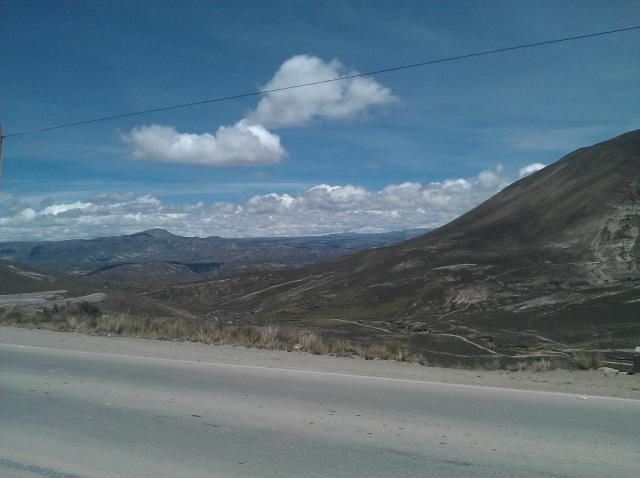
We didn't really do a break on the summit – there wasn't much to see, and we were close to Potosi. And so we went down again – a brutal descend. At first we passed through a landscape of mining, and soon we arrived at the entrance of Potosi, and continued with the brutal descend, until the centre of Potosi. The centre of town is very beautiful, with lots of old colonial building. But to get there, we also passed through the poorer neighbourhoods of Potosi.

In Potosi, we are back again on the 'gringo trail', with lots of tourist infrastructure. This has its benefits – at least for me as a vegetarian there are more food options. But its also an artificial world, separate from the life of the majority of Bolivians. It feels a bit strange – like a visitor from the different world.
- Alana Queer's blog
- Log in to post comments
 Español
Español
